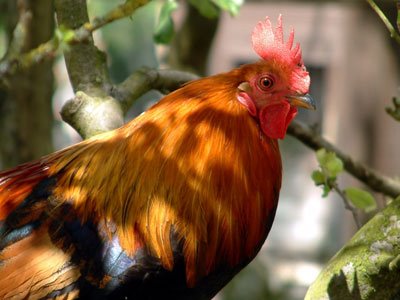Sent : Thursday, October 27, 2005 1:12 PM
To :
Subject : FW: [Bonus Issue] A Bout with Bird Flu


Be afraid. Be very afraid.
On Monday, world health ministers convened in Canada to discuss strategies for fighting the deadly strain of bird flu called "H5N1." The virulent avian virus has spread across Asia and into Europe, necessitating the slaughter of at least 150 million chickens, turkeys, geese, quail, and ducks.
Scarier still, H5N1 has jumped to mammals, including some that used to be considered immune to bird flu. We're not immune, either--though human infections so far have been few. The World Health Organization has counted just 121 laboratory-confirmed human cases since the current outbreak began in 2003.
That's the good news. The bad news is the virus continues to mutate, and many experts now believe it's endemic to parts of Asia. The more it stews, the more chances it has to mutate into a form that's highly contagious to us. And if that happens, the world could face a health crisis the likes of which it hasn't seen in decades. Conservative models say such a flu could kill 2 to 7.4 million people worldwide. Less conservative models say multiply that by ten. So, what is H5N1? And how could it become a global killer?
Today's Knowledge
A Bout with Bird Flu
Type A influenza comes in a variety of subtypes that infect birds, pigs, horses, seals, whales, humans, and other animals. Some can cause pandemics, and some are very lethal. Today's killer bird flu, labeled H5N1, is a nasty type A flu.
A Nasty Case of Bird Flu
Scientists classify type A flu viruses according to two proteins that show up on their surfaces: hemagglutinin (the "H" in H5N1) and neuraminidase (the "N"). The "H5" influenzas, including H5N1, come in both "low pathogenic" and "highly pathogenic" varieties. In its low pathogenic form, H5N1 could spread through your henhouse unnoticed, barely ruffling feathers. But in its highly pathogenic form, it would probably kill 90 to 100 percent of the hens it infected.
Unfortunately, the nearly undetectable low pathogenic form of H5N1 can mutate into the highly pathogenic form in a matter of months. So wild birds often carry the low pathogenic form to new places, where it circulates quietly until it mutates into the deadly form.
A Nasty Case of Human Flu
All of this is clearly bad news for birds (and their keepers). But why does it worry world health officials? Because the risk of a human flu pandemic taking off from this virus is high. According to the World Health Organization, "a pandemic can start when three conditions have been met: a new influenza virus subtype emerges; it infects humans, causing serious illness; and it spreads easily and sustainably among humans."
H5N1 already meets the first two conditions. It's basically a brand new bug for humans, so the defenses our bodies have built against other strains of flu won't help. And it's deadly. More than half of the people who've been infected so far have died. The only good news is that it hasn't mutated into a strain that "spreads easily and sustainably among humans."
There are basically two ways that could happen. In one scenario, the virus gradually adapts for human transmission. That would be bad, but maybe not horrible. As the virus adapted, we'd at least get a chance to spot clusters of human cases, treat them, and develop medical defenses. In a second, more frightening scenario, a human infected with H5N1 catches another flu, too. The two flu viruses then mix their genetic materials in what's known as a "reassortment event," producing a new, fully transmissible form of the flu.
Facing little or no resistance from existing human antibodies, that flu could race around the world, spreading itself through the coughs and sneezes of people who don't even know they have it. Once international spread began, experts say, such a pandemic would be virtually impossible to control. Flu moves too fast, and the world doesn't have enough antiviral drugs. Efforts are underway to make more and to develop a vaccine. But until we have those in the medicine chest, we'll have to hope that bird flu continues to be pretty much for the birds.
Steve Sampson
October 26, 2005
No comments:
Post a Comment